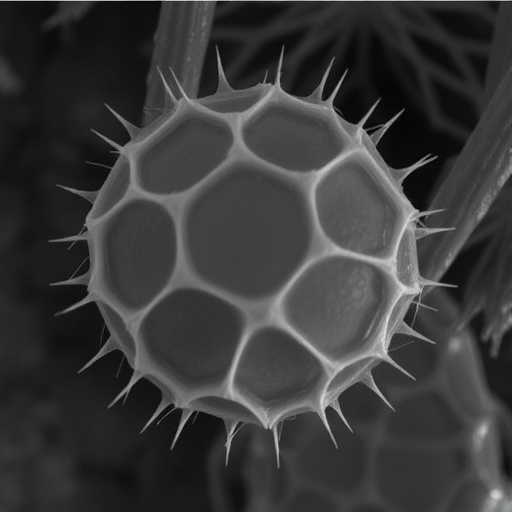In a groundbreaking study that advances our understanding of reproductive health, researchers Zhang, Xie, and Han have delved into the intricate relationship between granulosa cell pyroptosis and oocyte endoplasmic reticulum (ER) stress in a mouse model of polycystic ovary syndrome (PCOS). This pivotal research, published in the Journal of Ovarian Research, sheds light on the cellular mechanisms that underlie the pathophysiology of this common endocrine disorder affecting a significant number of women worldwide.
Polycystic ovary syndrome is characterized by a spectrum of clinical manifestations, including irregular menstrual cycles, anovulation, and hyperandrogenism. Despite its prevalence, the exact etiology of PCOS remains poorly understood, primarily due to the complex interplay of genetic, hormonal, and environmental factors. This study aims to elucidate one of the critical contributors to infertility in women suffering from PCOS—granulosa cell dysfunction.
Granulosa cells play a vital role in ovarian folliculogenesis, supporting oocyte maturation and ovulation. However, the phenomenon of pyroptosis, a form of programmed cell death associated with inflammation, poses significant concerns regarding the health of these cells. Zhang and colleagues have identified a potential link between the heightened levels of ER stress observed in oocytes and increased pyroptosis in granulosa cells, a finding that could reshape existing paradigms concerning ovarian function and fertility.
The study employed a mouse model to explore the biochemical and molecular underpinnings of this relationship. By inducing PCOS-like symptoms, the researchers were able to observe both the behavior of granulosa cells and the subsequent impact on oocytes. Their findings reveal that granulosa cell pyroptosis is significantly elevated in the presence of ER stress, suggesting a possible cascade of cellular events triggered by hormonal imbalances typical of PCOS.
One of the more striking outcomes of this research is the indication that managing ER stress in oocytes could mitigate the adverse effects of granulosa cell pyroptosis. By utilizing specific pharmacological agents known to alleviate ER stress, the study reports promising improvements in oocyte quality and viability. This transformative insight opens new avenues for targeted therapeutic interventions that could potentially enhance fertility outcomes in women diagnosed with PCOS.
The implications of this research extend beyond individual patient care; they also highlight a broader need for advanced diagnostic and treatment strategies that consider the complex biology of follicular development and oocyte health. As the medical community grapples with the increasing incidence of PCOS, understanding the cellular dynamics between granulosa cells and oocytes can inform clinical approaches to recovery and management.
Moreover, the role of inflammation in reproductive health cannot be understated. The study underscores the importance of an inflammatory milieu in the ovaries of women with PCOS, as the pyroptotic process in granulosa cells is associated with the release of pro-inflammatory cytokines. Such findings not only deepen the complexity of PCOS but also emphasize the necessity for anti-inflammatory strategies in ameliorating its effects.
Zhang et al.’s findings resonate with emerging trends in the field of reproductive biology, where the focus is shifting from traditional hormone-centric models of understanding reproductive disorders to a more comprehensive view that encompasses cellular health and microenvironmental conditions. This approach may ultimately lead to refined diagnostics and innovative therapeutic options tailored to individual patient histories.
In conclusion, the connection between granulosa cell pyroptosis and oocyte ER stress presents an exciting frontier in reproductive research. As we refine our understanding of these cellular interactions, it becomes increasingly clear that addressing cellular stressors could hold the key to improving fertility outcomes for women with PCOS. Researchers and clinicians alike are called to take these findings into consideration as we strive towards a future where managing reproductive health is informed by an intricate understanding of cell biology.
As this research paves the way for potential future clinical applications, it opens the floor for further studies aimed at validating these findings and exploring the broader implications they may have on reproductive health. The journey to unraveling PCOS continues, but through innovative research like this, we are one step closer to offering better solutions to those affected by this challenging condition.
Ultimately, the study by Zhang and colleagues serves as a crucial reminder of the intricate symphony that is human reproduction and the myriad factors influencing it. As new insights emerge, the scientific community is equipped with fresh perspectives that inspire hope and facilitate progress in overcoming the hurdles posed by conditions like polycystic ovary syndrome.
Subject of Research: The connection between granulosa cell pyroptosis and oocyte endoplasmic reticulum stress in a mouse model of polycystic ovary syndrome.
Article Title: Connection between granulosa cell pyroptosis and oocyte endoplasmic reticulum stress in a mouse model of polycystic ovary syndrome.
Article References: Zhang, Y., Xie, X. & Han, L. Connection between granulosa cell pyroptosis and oocyte endoplasmic reticulum stress in a mouse model of polycystic ovary syndrome. J Ovarian Res 18, 288 (2025). https://doi.org/10.1186/s13048-025-01841-w
Image Credits: AI Generated
DOI: https://doi.org/10.1186/s13048-025-01841-w
Keywords: Granulosa cells, pyroptosis, endoplasmic reticulum stress, polycystic ovary syndrome, fertility, inflammation, oocyte quality.




